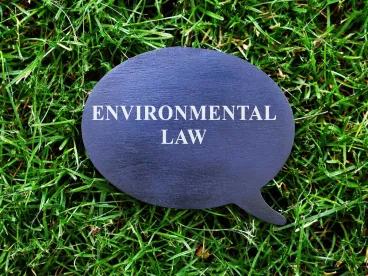The Inflation Reduction Act of 2022 (IRA) reflects the Biden Administration’s attention to issues of environmental justice and environmental equity. The IRA, directly and indirectly, invests in environmentally overburdened communities by: (1) seeking to reduce historic sources of pollution; (2) providing affordable and accessible sources of clean energy to disadvantaged communities; and (3) investing in communities to provide better jobs and address quality of life issues.
Pollution-Focused Funding
The IRA includes various grant programs to address emissions, air pollution, and other issues with historic pollution. The laundry list of big-ticket items includes:
-
$11 billion in funding occasioned by the reinstatement of the Superfund tax, intended to replenish funding for cleanups in communities that are disproportionately low income or otherwise overburdened by pollution sources.
-
$3 billion in funding for Environmental and Climate Justice Block Grants to invest in community led projects in disadvantaged communities to address issues including public health harms related to pollution and climate change.
-
$3 billion in Neighborhood Access and Equity Grants to support a competitive grant program to address infrastructure issues, to mitigate impacts associated with transportation facilities, and to support equitable transportation planning.
-
$3 billion in grants and rebates to reduce air pollution at ports, with funding targeted to areas suffering from historically impaired air quality and to develop climate-action plans.
-
$1 billion to establish a US Environmental Protection Agency (EPA) program to cover incremental costs associated with zero-emission school buses, garbage trucks, and transit buses, with a specific focus on equipment operated in areas with impaired air quality; and
-
$236 million for increased air pollution monitoring intended to benefit disadvantaged communities with persistent air quality issues.
Access to Clean Energy
The IRA contains a new appropriation to EPA called the Greenhouse Gas Reduction Fund, which provides increased and new funding under the Clean Air Act. EPA will provide direct grants to jump-start clean energy initiatives in low-income and disadvantaged communities. Qualified projects will reduce or avoid greenhouse gas emissions and other forms of air pollution, in partnership with, or by leveraging investment from the private sector; or assisting communities to reduce or avoid greenhouse gas emissions and other forms of air pollution. The appropriation sets aside 2 percent of the funding for EPA to administer the programs.
Of this amount, $7 billion is allocated for the deployment of technologies like rooftop or community solar in low-income and disadvantaged communities and $8 billion for a general fund making broad investments in reducing greenhouse gas emissions in these communities.
Investing in Communities
Finally, the IRA provides funds for various grant programs intended to benefit environmentally overburdened communities and augment climate-related resiliency efforts. These include:
-
$1.5 billion to plant trees, establish community and urban forests, and expand green spaces.
-
$550 million to ensure disadvantaged communities can plan, design, and construct water supply projects, focusing on communities or households that lack reliable access to clean water.
-
$397 million for Tribal governments to support the transition to renewable energy; to address drinking water shortages, drought relief, and wildlife programs; and to fund programming related to climate resilience and adaptation.
Related Environmental Justice Efforts
President Biden has elevated environmental justice, equity issues, and the IRA follows suit. President Biden issued EO 13985 on his first day in office to broadly require executive departments and agencies to “recognize and work to redress inequities in their policies and programs that serve as barriers to equal opportunity.” Shortly thereafter, the Biden Administration announced the “Justice40 Initiative,” (see here), setting a goal for 40 percent of the benefits of certain federal programs to go to “communities which are marginalized, underserved, and overburdened by pollution.” The Biden Administration has indicated that, between January 2021 and May 2022, Justice40-included programs totaled over $29 billion in opportunities.
The Biden Administration EJ efforts extend beyond funding. EPA personnel, including Administrator Michael Regan, emphasized in speeches that “environmental justice is not an add-on or afterthought – it is a central driving factor in all we do.” (See our discussion here.) EPA’s “Equity Action Plan” released in April committed EPA – among other things – to increase community engagement, to focus on equity in procurement and contracting, and using federal civil rights laws and a “whole of government” approach to advance environmental compliance. (See our discussion here.) One example of this approach is the US Department of Housing & Urban Development’s recent finding labeling the City of Chicago’s efforts to move a recycling facility from a wealthy, majority white neighborhood to a community that had been previously classified as “environmentally overburdened” as being problematic from an EJ perspective. (See our discussion here.)




 />i
/>i

